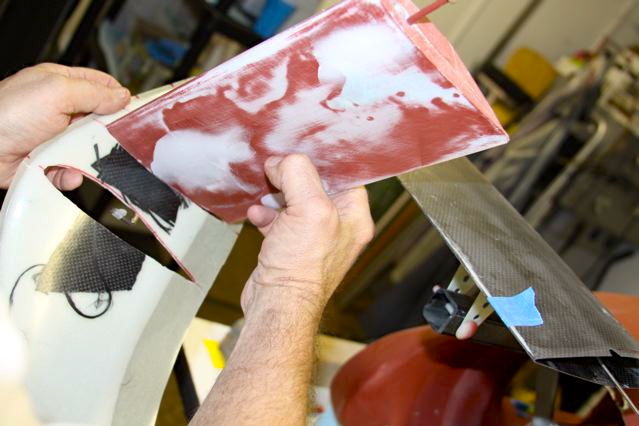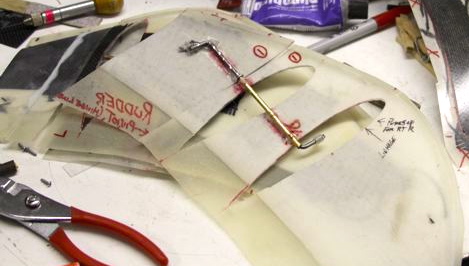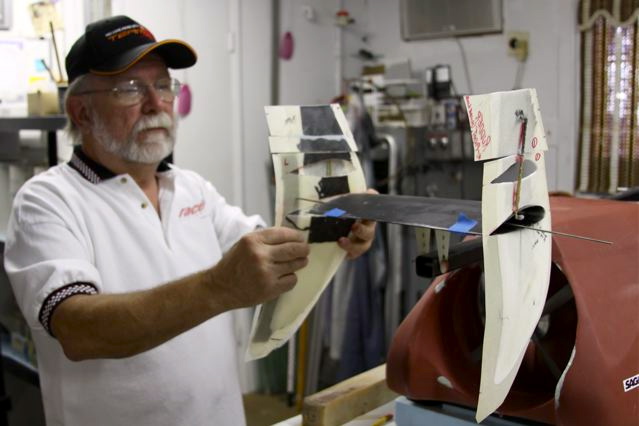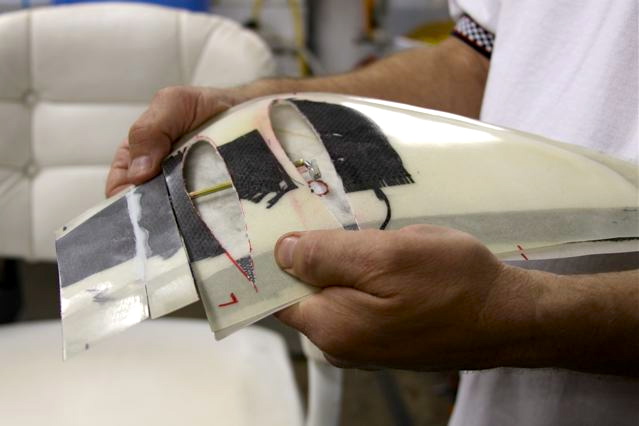We made some good progress with the tail mods. Joe Marine at Race Pro Engineering has the tail vertical pieces being joined, and fitted with the rudder actuation mechanism in the shot below. This is prior to trimming the excess away around the edges. For scale models, this technique works. Won’t work for the full-scale!
A lot of work goes into the fitting of the tail components together. We will have a jig for the tail assembly for future scale kits, and also for the full-scale. Getting the right angles is critical. Here Joe is checking fit for one of the horizontal stabilizers to one of the vertical stabilizers.
It is interesting to see how the rudders are connected. You have one actuator connected to a rudder at the top of each vertical stabilizer. They have to be aligned, moving together, and accurately placed. In the full-scale, this would be easier to accomplish. In the quarter scale, it is a tight fit for the components!
Good thing Joe has a good pair of eyes! You line things up by eye to start, then work towards progressively tighter tolerances and checks. When we get the ideal tail finalized for this scale of plane, we will make up the jig to make assembly a snap.
More trial fittings are shown below, as Joe gets closer to having the right set-up of rudder hardware, hinging, and surface alignment.
This is all being built from scratch, so there is work to get the tail mounting just right the first time. The stabilizer in this scale test is an all-moving tail. The hinge is on the boom (shown below), and an actuator rotates the tail forwards or backwards at the hinge to set angle of attack for the horizontals. The boom is carbon fiber.
Part of the whole design process is to look at the way we build the scale model, and apply that to how we might construct the full-scale to make it an easier and low-stress build. The structural engineers will be dictating quite a lot (next phase of the project), but we can use our visuals and experience to talk over options that might otherwise be glossed over. For instance, on the ducted fan section, we found that trying to align two halves of the duct was VERY difficult, so we are proposing construction using a single mold for that area, with reinforcement built in to keep the circular shape required for a small prop clearance. We are also looking at how we would make our molds to move into larger production runs. This has been a great learning experience. If this had been a typical aircraft, we wouldn’t have found working on a quarter scale as enlightening, but with the unconventional design of the Switchblade, it has been of great assistance.





